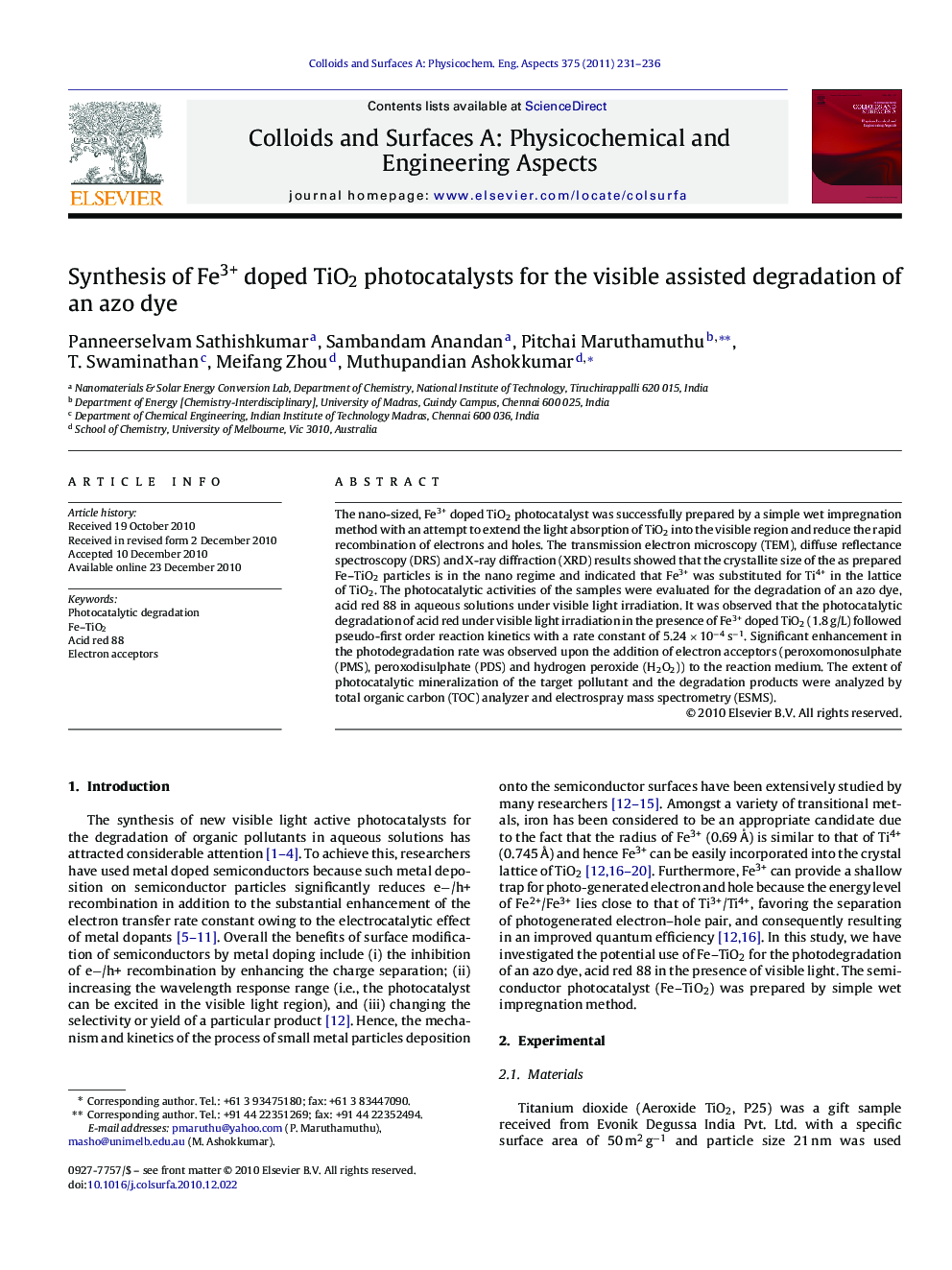| Article ID | Journal | Published Year | Pages | File Type |
|---|---|---|---|---|
| 595020 | Colloids and Surfaces A: Physicochemical and Engineering Aspects | 2011 | 6 Pages |
The nano-sized, Fe3+ doped TiO2 photocatalyst was successfully prepared by a simple wet impregnation method with an attempt to extend the light absorption of TiO2 into the visible region and reduce the rapid recombination of electrons and holes. The transmission electron microscopy (TEM), diffuse reflectance spectroscopy (DRS) and X-ray diffraction (XRD) results showed that the crystallite size of the as prepared Fe–TiO2 particles is in the nano regime and indicated that Fe3+ was substituted for Ti4+ in the lattice of TiO2. The photocatalytic activities of the samples were evaluated for the degradation of an azo dye, acid red 88 in aqueous solutions under visible light irradiation. It was observed that the photocatalytic degradation of acid red under visible light irradiation in the presence of Fe3+ doped TiO2 (1.8 g/L) followed pseudo-first order reaction kinetics with a rate constant of 5.24 × 10−4 s−1. Significant enhancement in the photodegradation rate was observed upon the addition of electron acceptors (peroxomonosulphate (PMS), peroxodisulphate (PDS) and hydrogen peroxide (H2O2)) to the reaction medium. The extent of photocatalytic mineralization of the target pollutant and the degradation products were analyzed by total organic carbon (TOC) analyzer and electrospray mass spectrometry (ESMS).
Graphical abstractFigure optionsDownload full-size imageDownload as PowerPoint slideResearch highlights▶ The synthesis of new visible light active photocatalysts has attracted considerable attention. ▶ Nano-sized Fe–TiO2 visible light photocatalyst has been synthesized through a wet impregnation method. ▶ A higher photocatalytic activity of the Fe–TiO2 photocatalyst is observed compared to bare TiO2.
